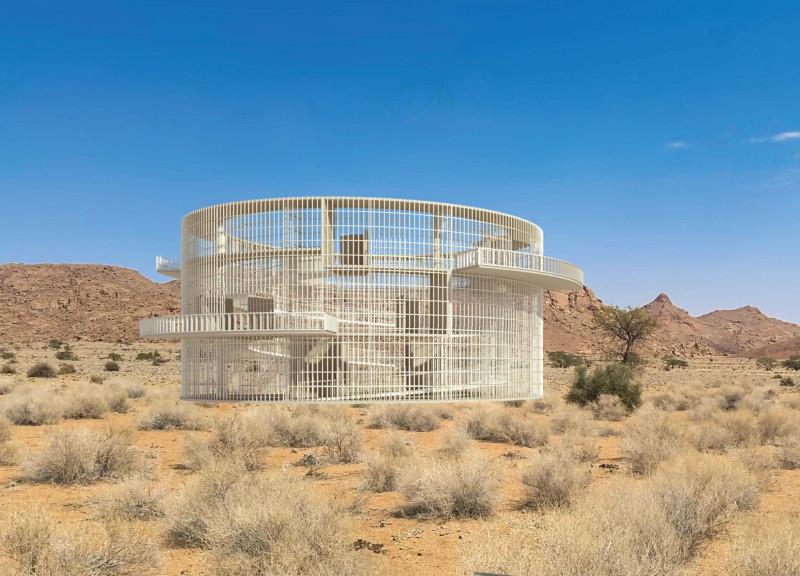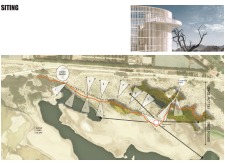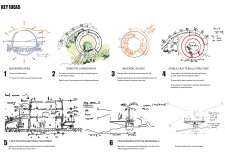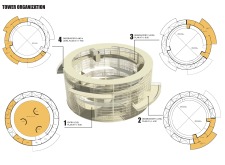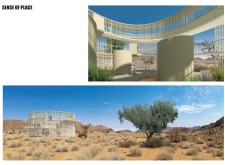5 key facts about this project
The design is situated in a landscape characterized by water, sand, and bluff. The main function is to serve as a Visitor Center, inviting the public to connect with the surrounding nature. The overall concept revolves around the use of a circular form, enabling visitors to appreciate views in all directions. This approach not only enhances the building's aesthetic but also fosters an interaction between indoor spaces and the natural environment.
Building Organization
Distinct zones are established within the layout, including a potential boardwalk and clearly identified Green and Yellow areas. These divisions guide the visitor experience and create a logical flow through the space. The layout is intentionally designed to highlight the natural features of the site, offering different experiences as guests explore.
Structural System
The structure relies on two rings made from split palm trunks, which provide support and stability. These walls are supplemented by brace walls, ensuring a strong and simple construction method. Shallow foundations have been installed manually, which is practical considering the environmental concerns associated with the location.
Accessibility and User Experience
A key feature of the design is its emphasis on universal access. Ramps are integrated throughout to assist with movement within the building, making it easy for all visitors to navigate the space. This focus on accessibility is complemented by a layout that enhances the visitor experience, with open areas connecting various levels and promoting engagement.
Inside, the design includes exhibition spaces, staff areas, and a main outdoor court. The arrangement encourages visitors to move freely and interact with the environment. Well-placed openings allow natural light to enter, creating a connection to the outdoor landscape and reinforcing the project’s goal of blending architecture with nature. Each design element works together to create a harmonious environment that reflects the character of the site.


